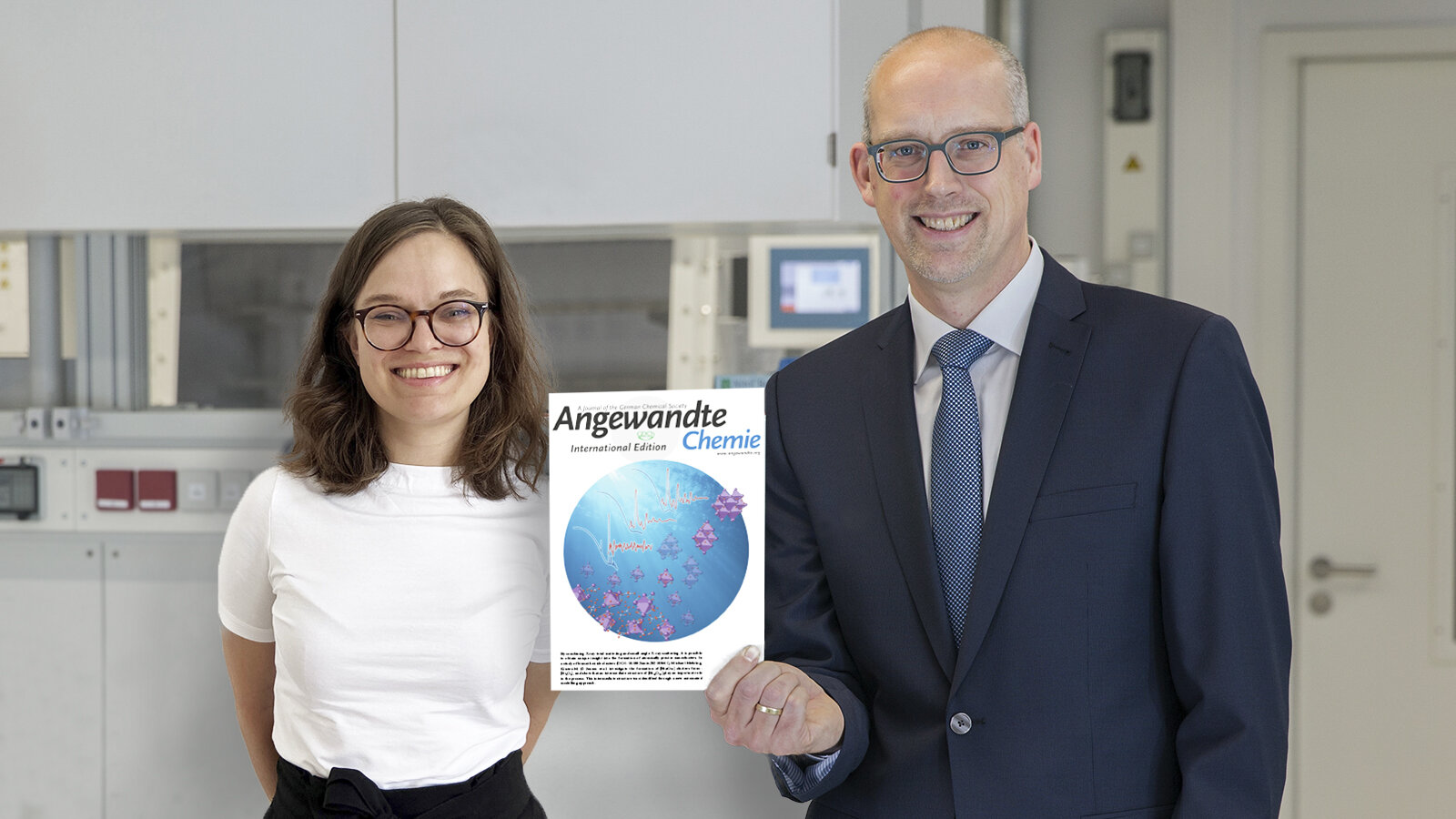How molecular entities assemble in solution to give atomically precise nanoclusters
International research team of Chemnitz University of Technology, University of Copenhagen and Brookhaven National Laboratory publish a “Very Important Paper” in Angewandte Chemie Int. Ed.
-

Associate Professor Kirsten Marie Ørnsbjerg Jensen from the Department of Chemistry and Nano-Science Center at the University of Copenhagen and Prof. Dr. Michael Mehring, Professorship Coordination Chemistry at Chemnitz University of Technology, are among the authors of the article published in the journal "Angewandte Chemie Int. Ed.". Photo composition: Jacob Müller (Image sources: private, Professorship Coordination Chemistry, archive of the press office and Crossmedia editorial office).
Since the famous lecture of the nobel laureate Richard P. Feynman “There’s Plenty of Room at the Bottom” at the California Institute of Technology in 1959 nanoscience became one of the most important research fields leading to novel technologies in diverse areas. In nanotechnology small objects called nanoparticles, which show at least one dimension less than 100 nm in size, play a major role. Although many synthetic techniques have been developed worldwide to prepare nanoparticles of various size and shape, solution based processes that lead to these nanoobjects are still not well understood on the atomic and molecular level, pointed out by Prof. Dr. Michael Mehring (Professorship of Coordination Chemistry).
A consortium of researchers from the University of Copenhagen, the Brookhaven National Laboratory and Chemnitz University of Technology shed some light on these fundamental processes with studies based on model compounds developed at TU Chemnitz and using a new analytical method developed at the University of Copenhagen. The analytics were carried out using the synchrotron facilities at DESY (Hamburg, Germany), Soleil (Saint-Aubin, France) and ESRF (Grenoble, France) and were funded by the European Research Council (ERC) under the European Union's Horizon 2020 Research and by the Deutsche Forschungsgemeinschaft. “We follow the idea to provide molecular insight in the growth and nucleation of atomically precise nanoclusters in solution using bismuth oxido clusters as models compounds since several years now, and thanks to this excellent cooperation with experts headed by Associate Professor Kirsten Marie Ørnsbjerg Jensen from the Department of Chemistry and Nano-Science Center of the University of Copenhagen, we were now able to go a large step forward, although still further fundamental questions are to be answered,” said Prof. Michael Mehring.
It is important to fully understand the fundamental steps in nanocluster formation in order to prepare novel nanoscaled materials with well-defined chemical and physical properties by design for use in areas such as nanoelectronics, nanomedicine and for nanoenergy applications. Nanotechnologies come into play whenever very small objects which are 100.000 times smaller than human hair are used in applications. “To build up a fundamental understanding we developed new tools for combined, automated analysis of in situ Pair Distribution Function analysis and Small-Angle X-ray Scattering data, and thus can identify intermediate species in the formation of atomically precise nanoclusters in solution,” said Andy Anker, PhD student at the University of Copenhagen. However, to dig even deeper on the oligomerisation processes in the future, new possibilities for ultrafast, high flux X-ray scattering studies have to be developed. The international team started the experiments four years ago, and their perseverance was rewarded with publication of a Very Important Paper (VIP) in Angewandte Chemie, which is the flagship journal of the German Chemical Society (GDCh). It is one of the prime chemistry peer-review journals in the world. This communication was rated as VIP according to the evaluation of the referees. Less than 5% of the manuscripts submitted to Angewandte Chemie receive such a positive evaluation. In addition the authors were given the opportunity to create the inside cover to visualise their results for the broad readership.
“The successful international collaboration will stimulate further studies and is taken as motivation to tackle the open questions left,” said Dr. Marcus Weber and Rico Thomas from Chemnitz University of Technology, which are both involved in this long-term project.
Publication:
Andy S. Anker, Dr. Troels Lindahl Christiansen, Dr. Marcus Weber, Dr. Martin Schmiele, Dr. Erik Brok, Emil T. S. Kjær, Dr. Pavol Juhás, Rico Thomas, Prof. Dr. Michael Mehring, Dr. Kirsten M. Ø. Jensen. Structural Changes during the Growth of Atomically Precise Metal Oxido Nanoclusters from Combined Pair Distribution Function and Small-Angle X-ray Scattering Analysis. Angewandte Chemie. 2021 - 60/37. Pages 20407-20416. https://onlinelibrary.wiley.com/doi/10.1002/anie.202103641
DOI: https://doi.org/10.1002/anie.202103641
For additional information, please contact Prof. Dr. Michael Mehring, Professorship of Coordination Chemistry, Chemnitz University of Technology, phone: +49 (0)371 531-21250, e-mail michael.mehring@chemie.tu-chemnitz.de.
Mario Steinebach
12.09.2021




